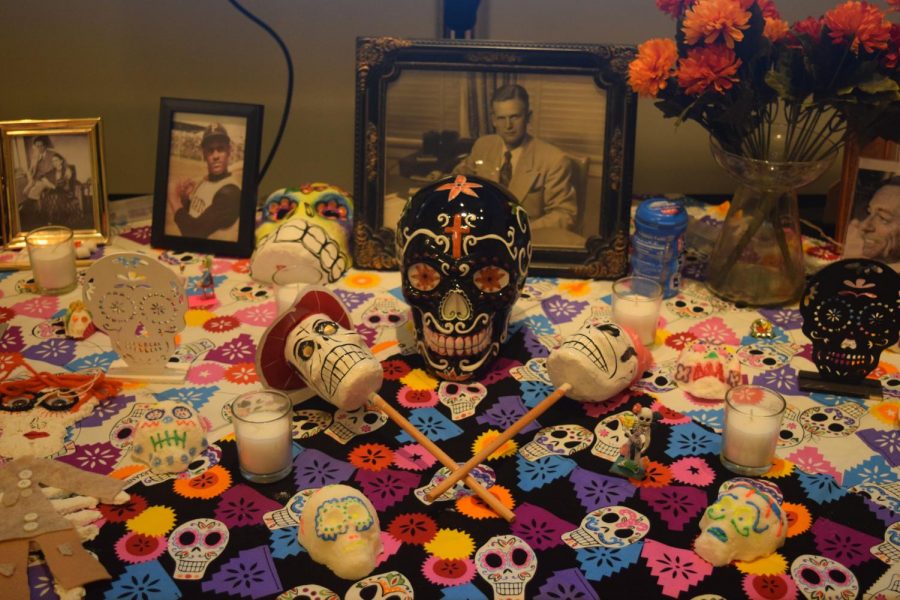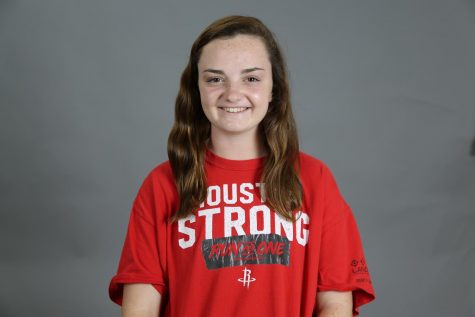Día de los Muertos display honors loved ones
Sugar skulls, photographs and other objects covered the ofrenda outside of the Glassell Gallery.
November 9, 2018
Sugar skulls (calaveras), candles, incense, marigold flowers, water, food and vibrant cloths all bedeck the area outside of the Glassell Gallery on an “ofrenda,” an offering to the deceased. This dynamic display is a traditional component of Día de los Muertos festivities, which celebrate the lives of those who have passed.
In the U.S., people tend to grieve the people they love long after they are dead. In Mexico, though they still grieve, when Día de los Muertos comes around, they are given the chance to honor their loved ones. The School’s display, also called an “ofrenda,” features many photos, including ones of a deceased Spanish teacher, relatives of students and other special people.
“My favorite part of the Day of the Dead is probably the parties, which aren’t very common in the US,” Ferrufino said. “When you are with all your family, it is a good time to get together and remember the best parts of the people who have passed away.”
Día de los Muertos, also known as the Day of the Dead, is a major part of Mexican culture and heritage. Those who celebrate it believe that at midnight on Oct. 31, the souls of all deceased children come down from Heaven to be reunited with their families for one day. On Nov. 2, deceased adults visit their loved ones.
“We tend to be scared of death, and I just think it is so intriguing that Mexicans have a completely different viewpoint — they embrace it,” Kehs said. “It is not about celebrating death, but rather celebrating the lives of those who have passed. [Instead of] being sad about it, they celebrate all the good things those people did in their lives.”
The Día de los Muertos “ofrenda” is a critical part of the celebration. The exhibit was put together by Latinos Unidos, an affinity group, with the help of several teachers including Sherifa Meguid Kehs. Senior Jackie Ferrufino, a leader of Latinos Unidos, created the “ofrenda.” Behind the display is a projector where people in the community wrote about people in their lives who are deceased.
“I had to physically set it up, send out the the push pages on the infographic and communicate with different Spanish related clubs,” Ferrufino said. “I participated in collecting donations and putting together the actual TV display.”
A critical part of “ofrendas,” according to Kehs, are the varying heights of the decorations, a look that Ferrufino helped to create by stacking boxes underneath the cloths.
In previous years, Kehs helped Spanish Club set up an altar in front of the headmaster’s office, but in order to make the “ofrenda” visible to the entire St. John’s community, Latinos Unidos and Kehs moved it to the hallway outside of the Glassell Gallery. In the future, they hope to establish the tradition of creating a new “ofrenda” each year as well as to improve the quality of the display.
Each year, Spanish I students learn about Day of the Dead and, this year, they were asked to take part in the celebrations. Each student wrote a slide and brought an object and framed photo of the deceased family member they wrote about.
In the future, Latinos Unidos and Kehs hope to establish the tradition of creating annual “ofrendas.” They hope to improve the display in the upcoming years by getting more community members to contribute photos and objects of loved ones.






